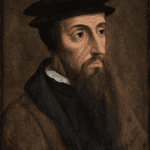Leviticus 21:10-15 describes the particular regulations governing the priest who is ?highest among his brothers,?Eand justifies these regulations by saying that ?the consecration of the anointing oil of his God is upon him?E(v. 12b). The word ?consecration?Etranslates nzr , elsewhere used of the ?holy crown?Ethat was placed upon the high priest (Leviticus 8:9). The nzr is elsewhere called a zyz , translated in the NASB as ?plate?Ebut actually meaning ?flower?Eor ?blossom?E(Exodus 28:36; Leviticus 8:9). Thus, Leviticus 21:12 literally says that the ?crown of the anointing oil of his God is upon him.?E While this might be taken to mean merely that the oil by which the high priest was anointed during the rite of ?filling?Eis like a crown, the fact that he actually wears a crown suggests that the nzr itself is a permanent sign of his anointing. In terms of the visual symbolism, this makes sense: the golden oil of anointing ?coagulates?Einto the pure gold crown. Significantly, the account of the ordination service in Leviticus 8 elaborates both the description of the crown and the rites of anointing with oil (8:9-12; cf. Exodus 28:36; 29:7).
This symbolic equation of the crown and the anointing is supported by the connection of each with the holiness of the high priest. The crown is engraven with the phrase ?holy to the Lord?E(Exodus 28:36), and the oil of anointing is said to ?consecrate?Ethe high priest (Leviticus 8:12). The crown is the permanent witness to the high priest?s superlative holiness, which was conferred in the anointing.
Moreover, if, as James Jordan has suggested, oil is liquid light, then gold is solid light. The garments of the high priest are full of sparkling gems and gold, and within the breastplate are the ?urim,?Ewhich means ?lights.?E The priest, moreover, is a living lampstand, which is reinforced by the fact that he wears a crown of solid light. The association with light brings out other connections. Oil makes man?s face to shine (Psalm 104:14), and the priest?s permanent anointing makes his forehead bright. This makes him a permanent Moses, whose face shone with the reflected glory of Yahweh. Perhaps too we can connect the golden crown of the priest with the shining fire of Pentecost. Like the priests of old, the disciples at Pentecost were living lampstands, crowned with the anointing of the Spirit, shining the light of the Light of the world into a dark generation. Unlike the old priests, however, who had to leave the Holy Place when the glory descended, the disciples remain in the presence of the Spirit and actually become the Holy Place in which the Spirit dwells.














